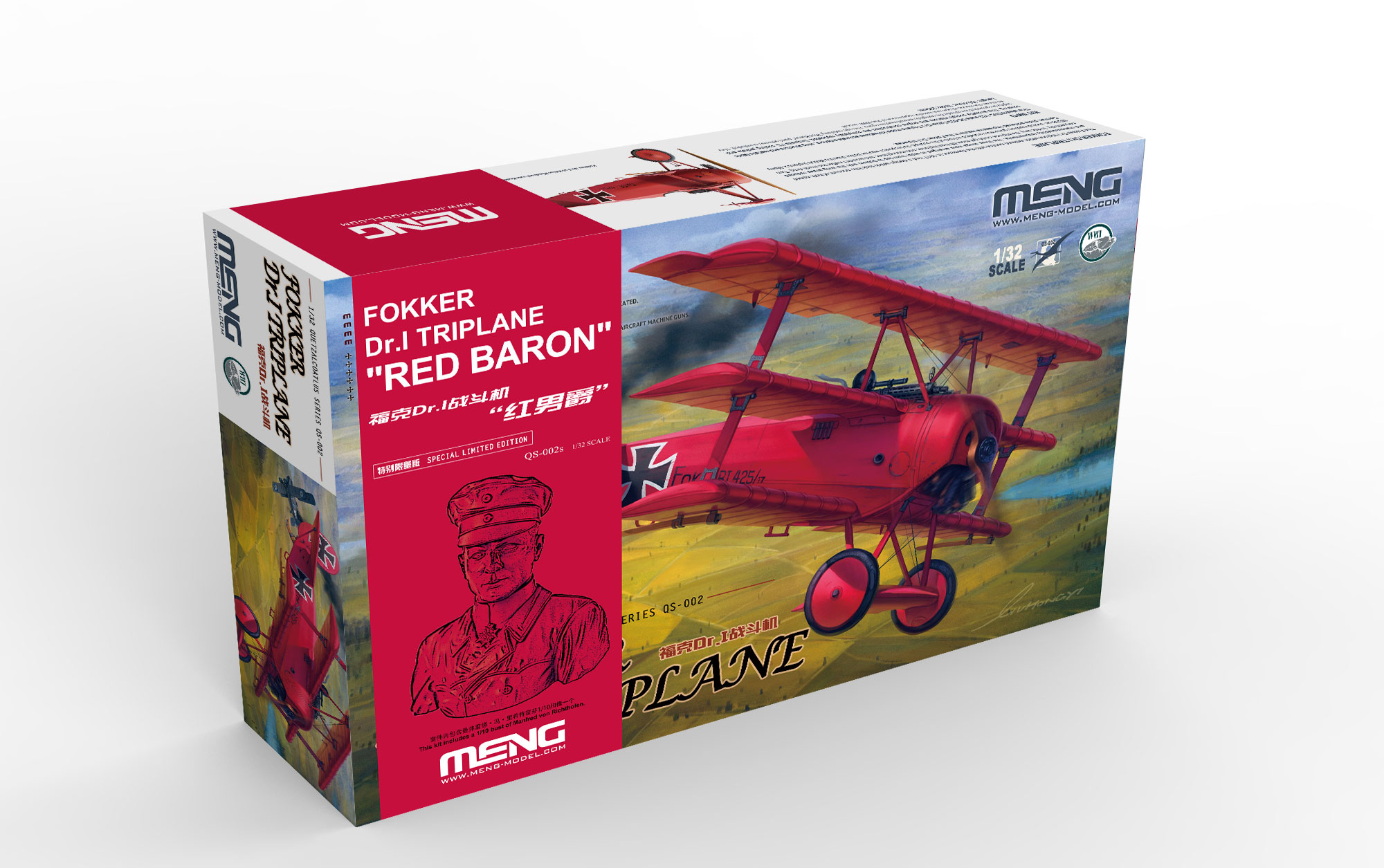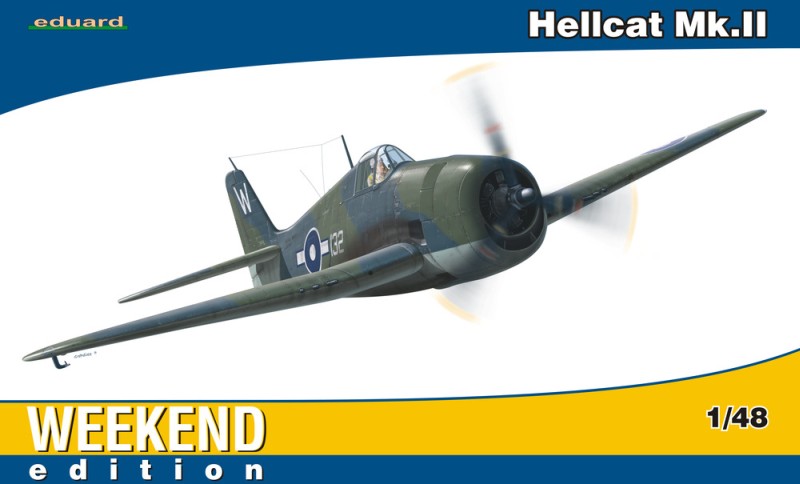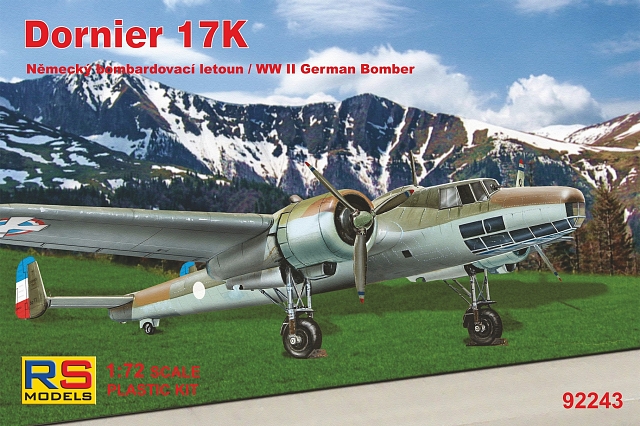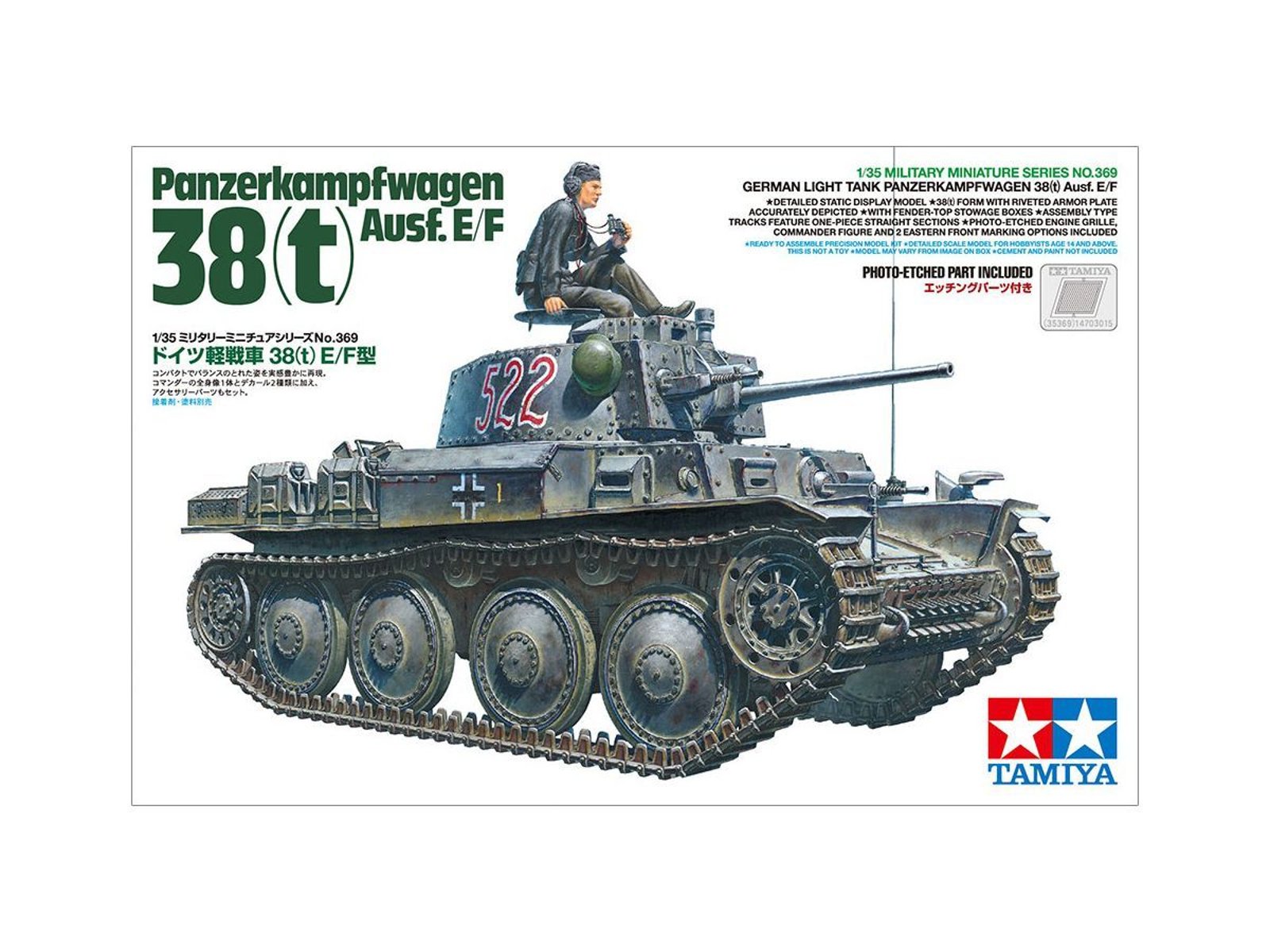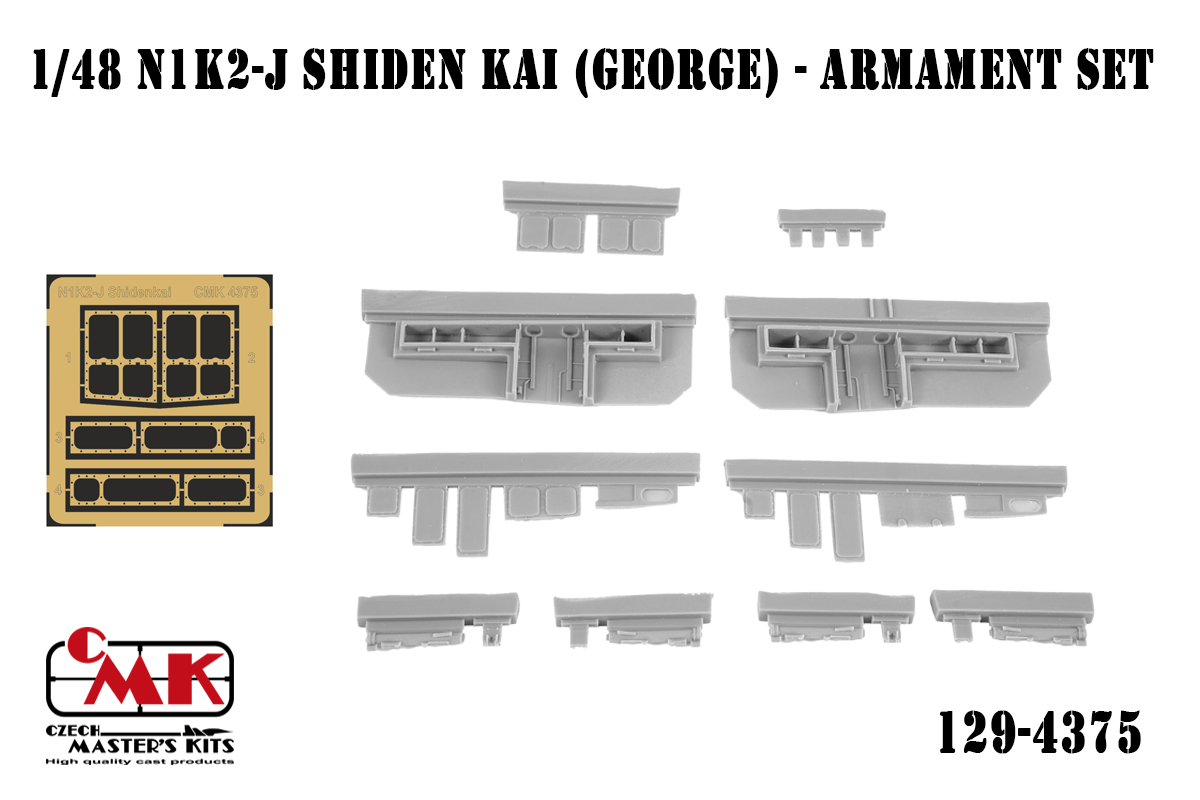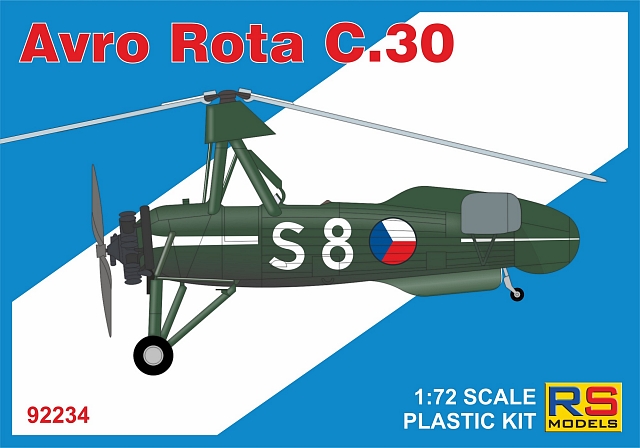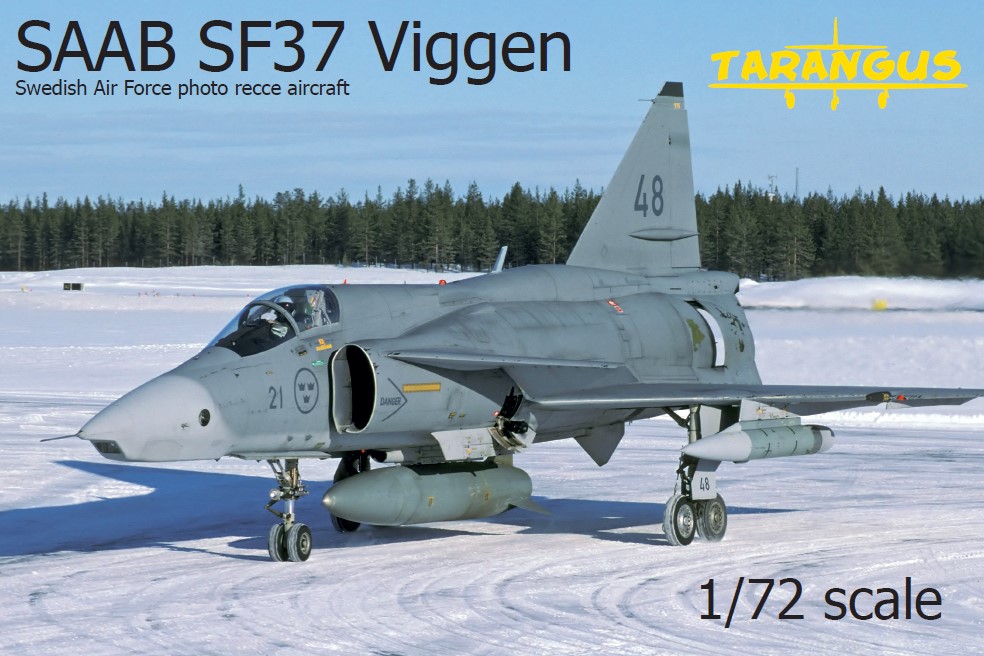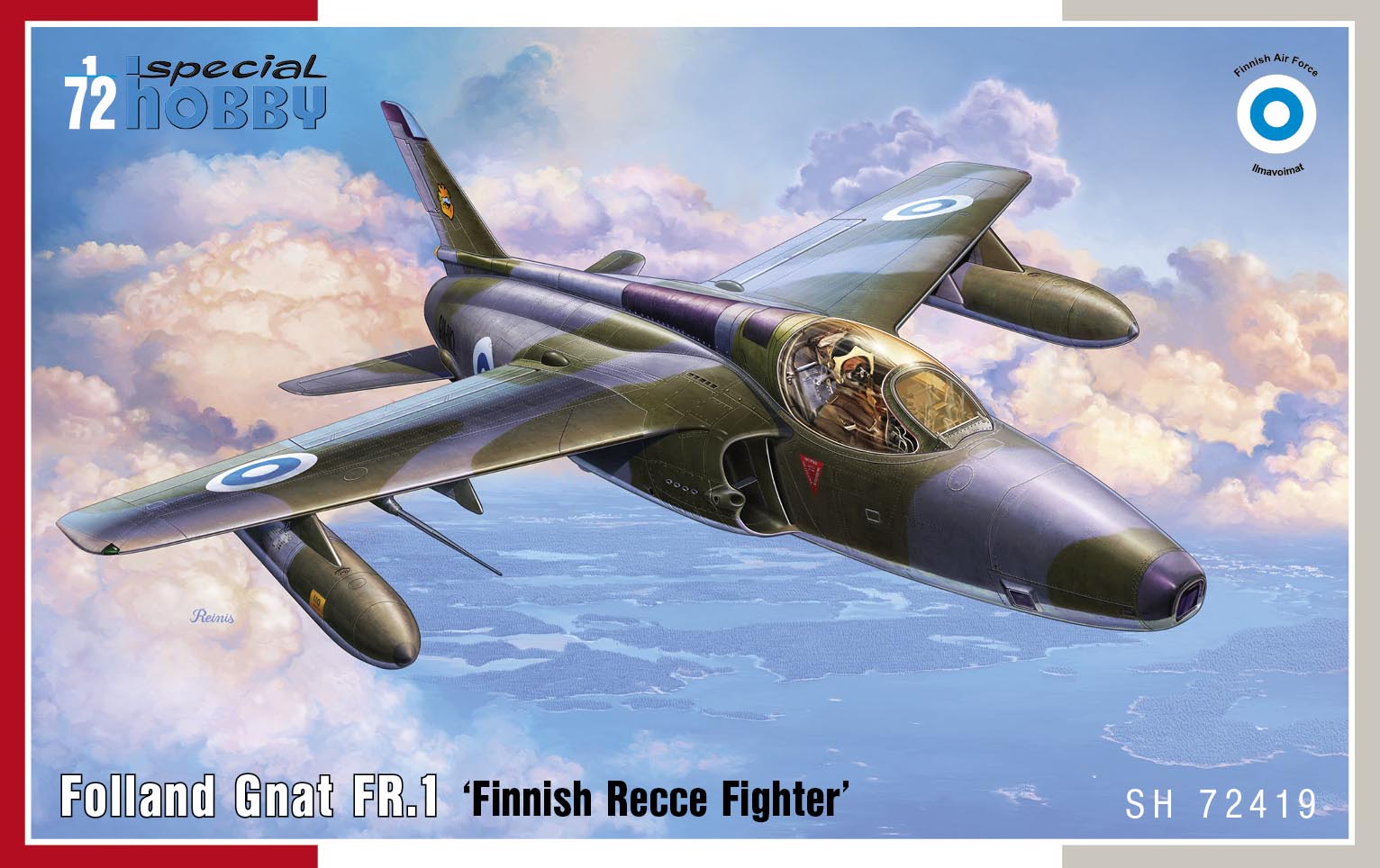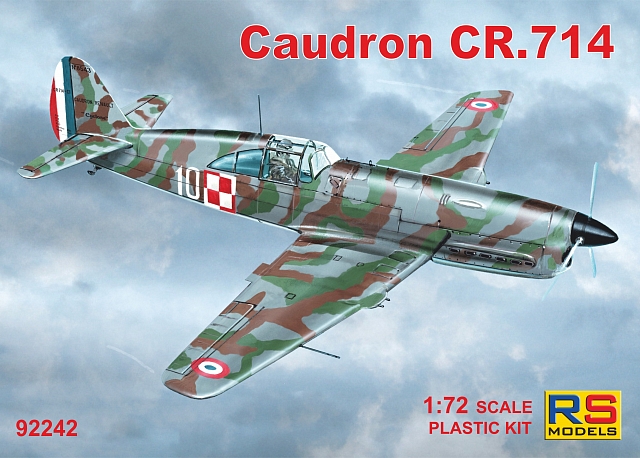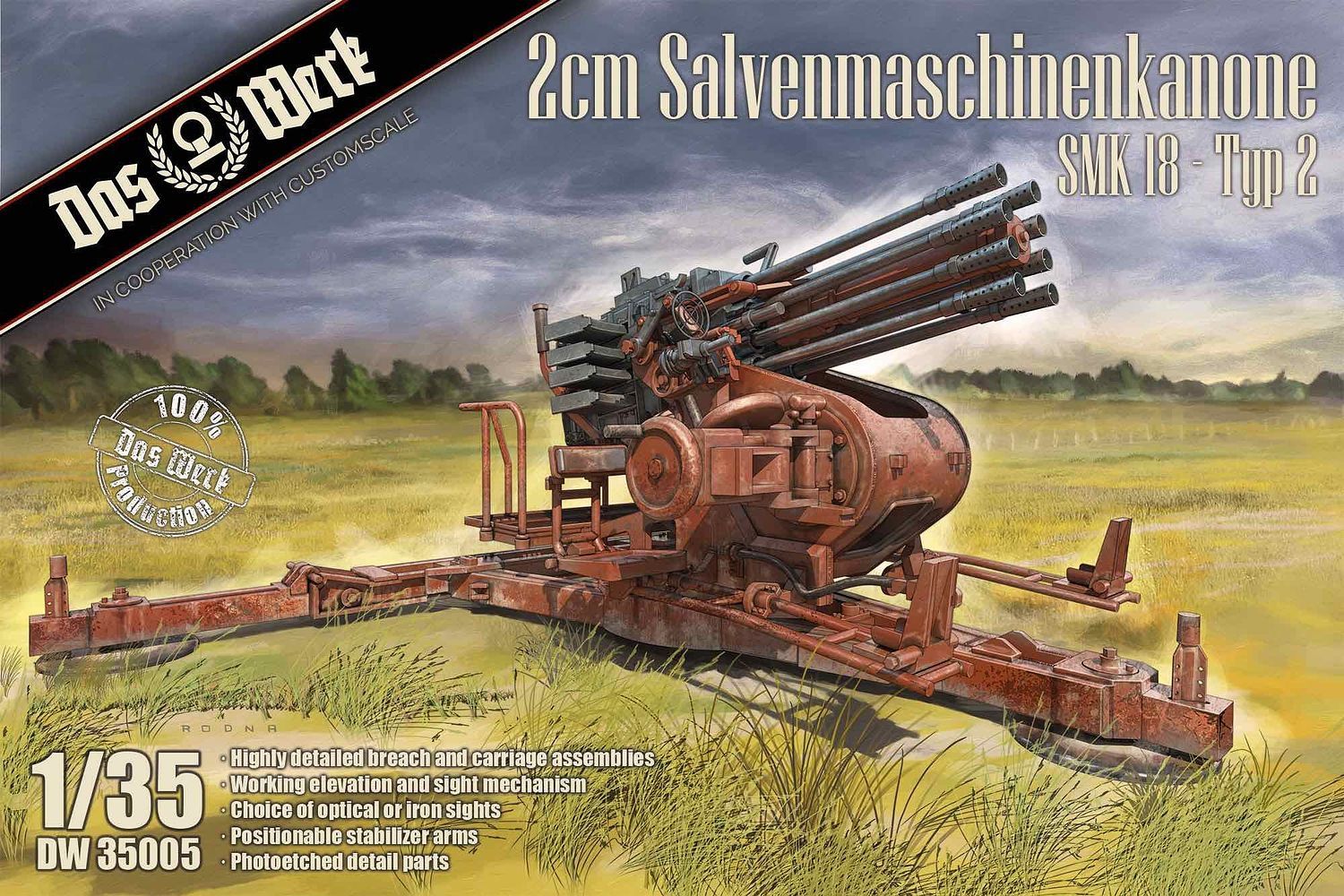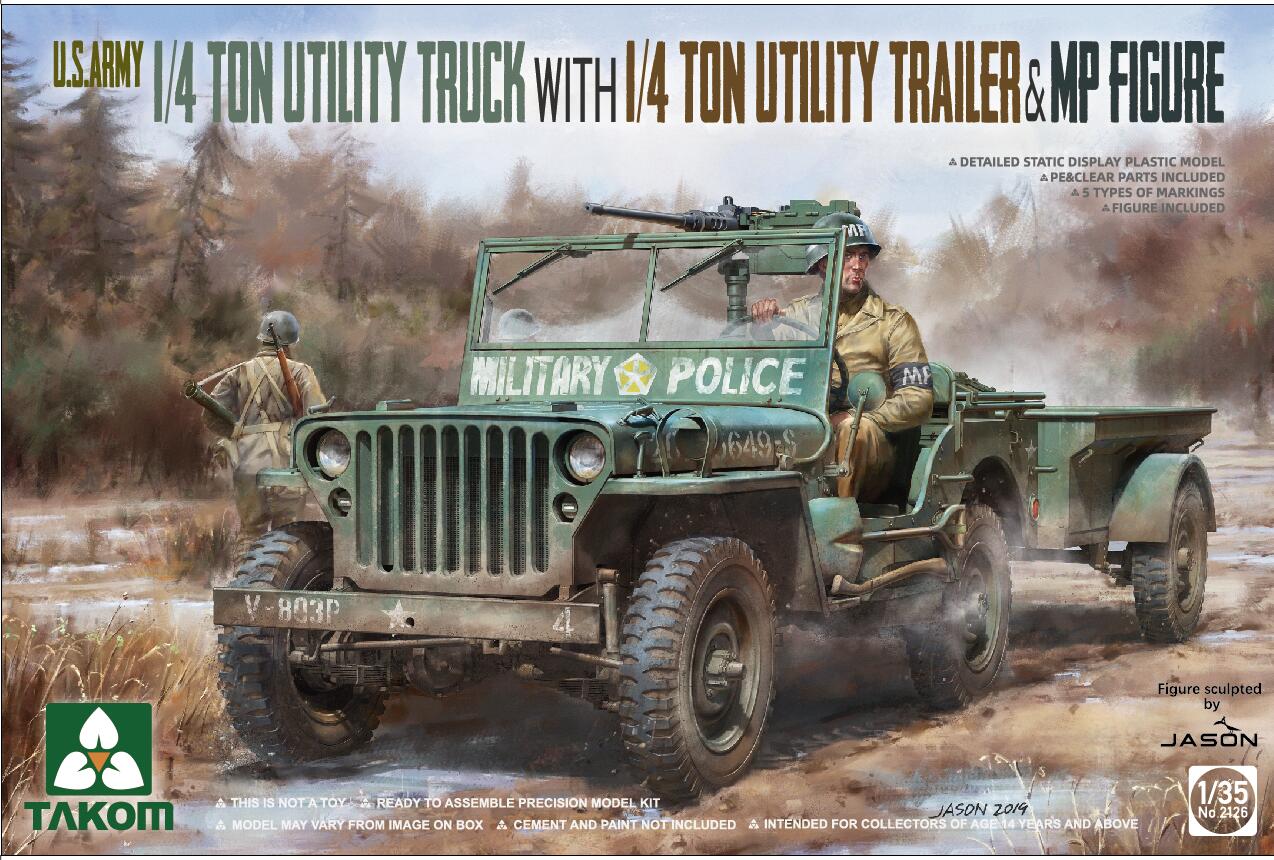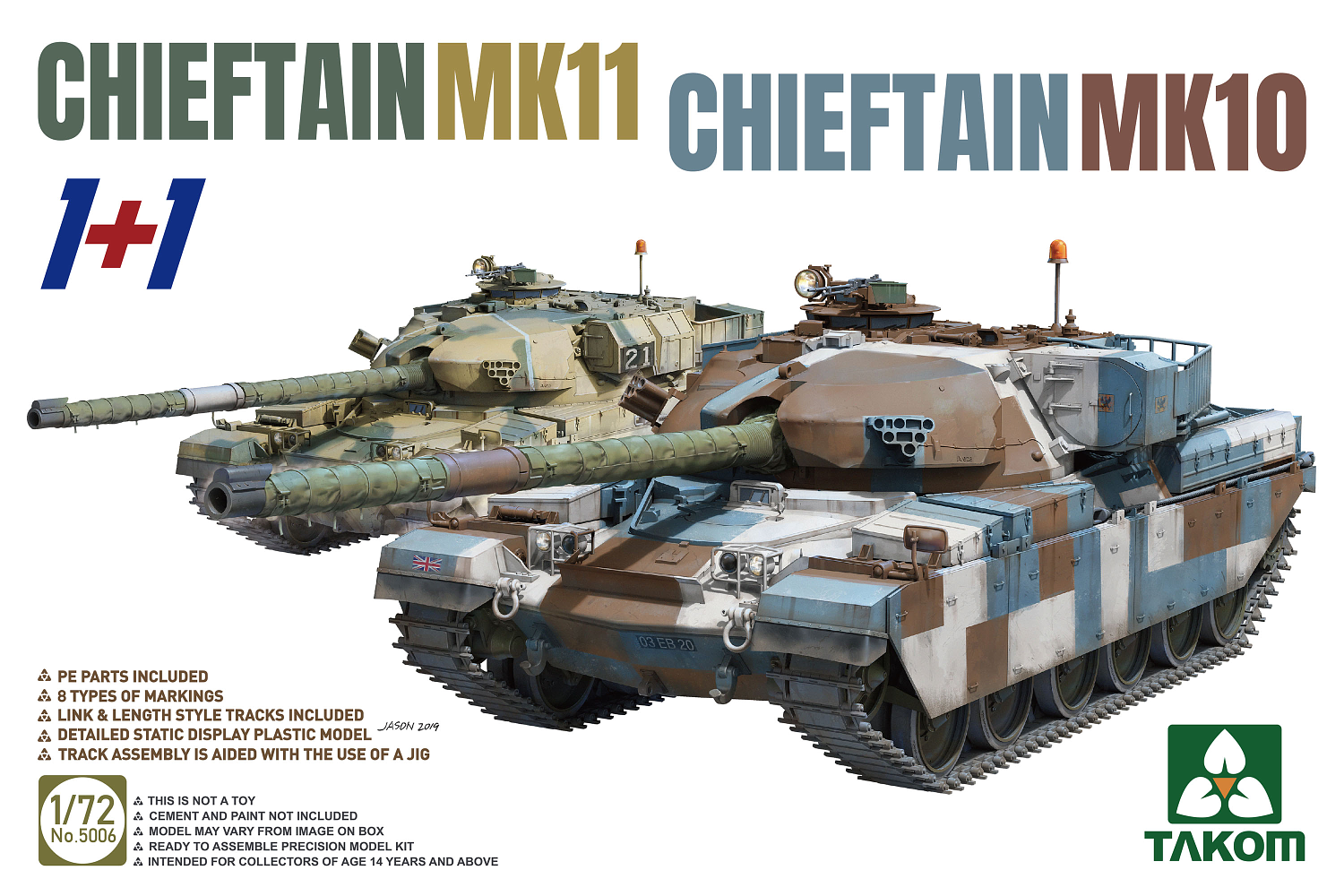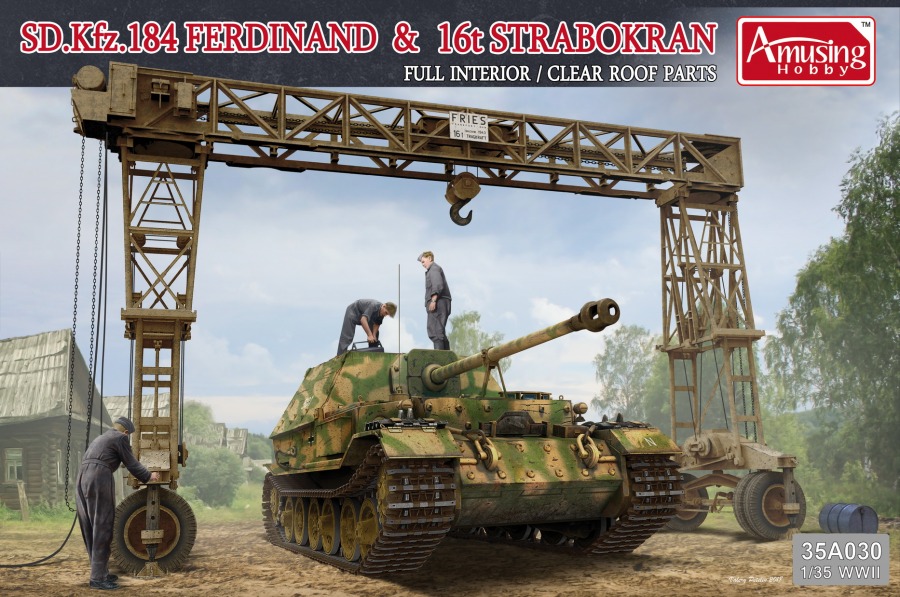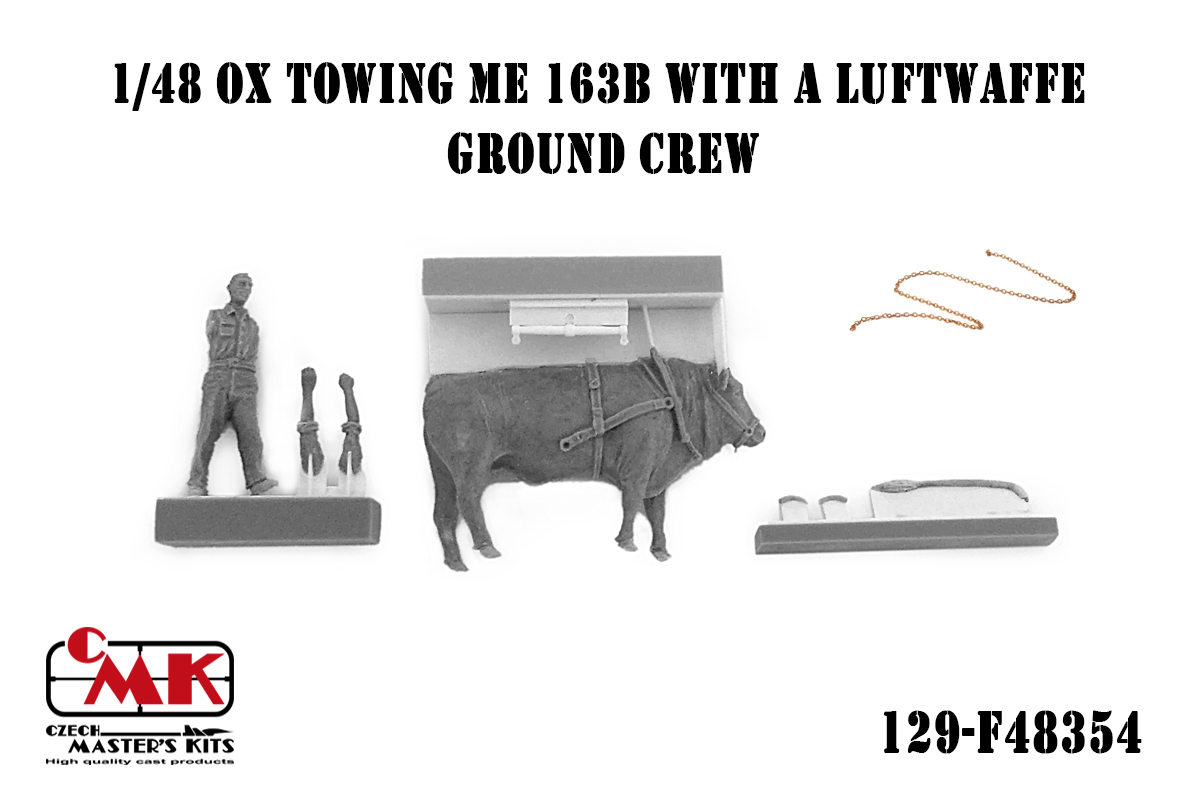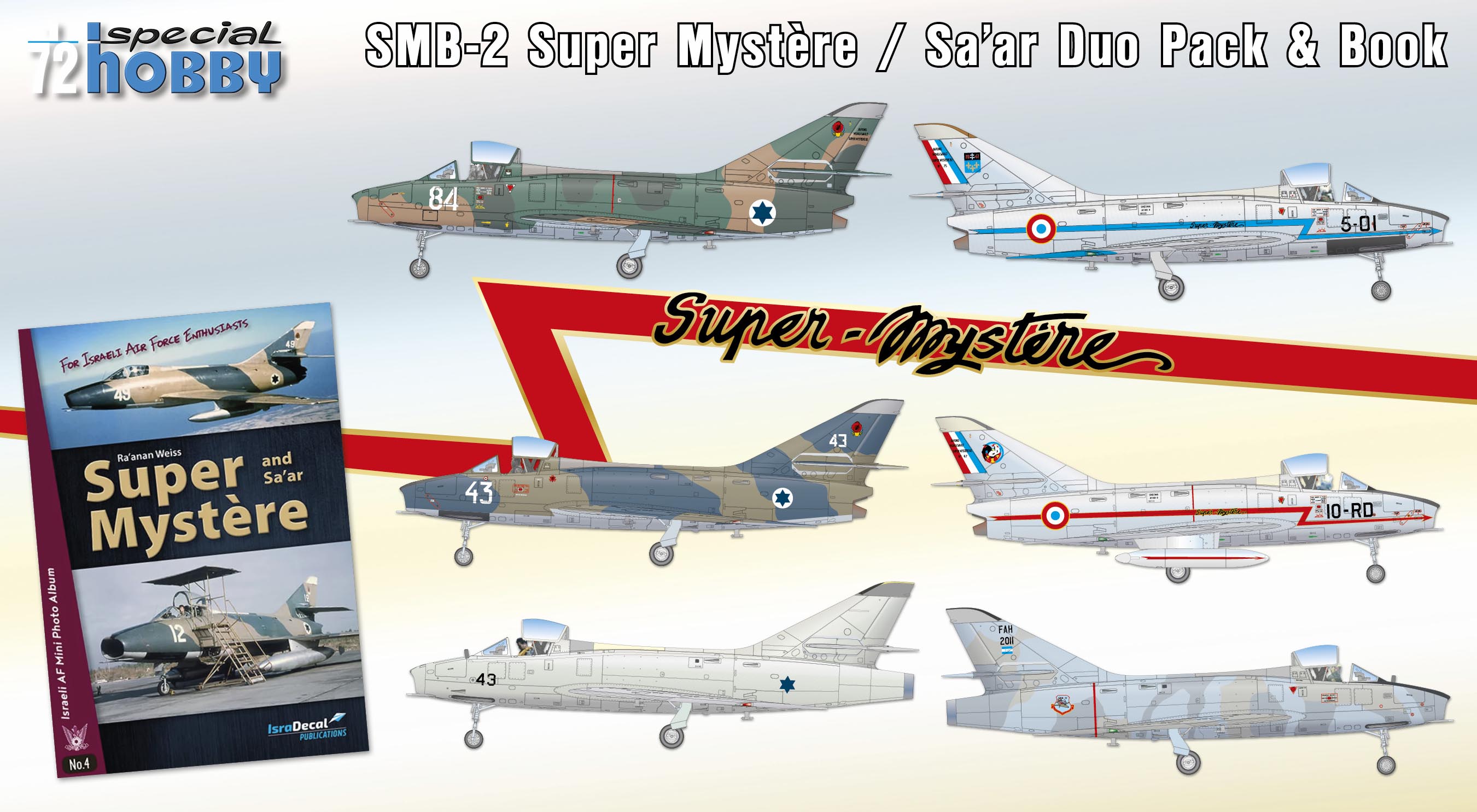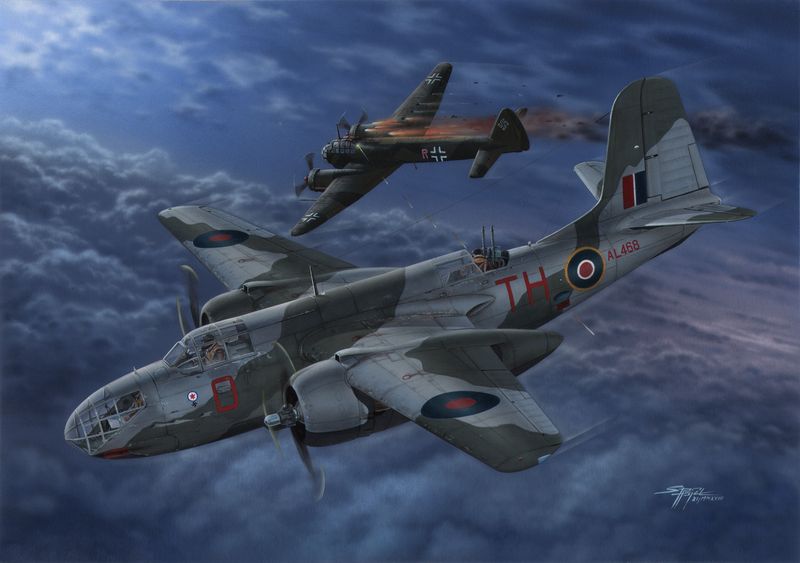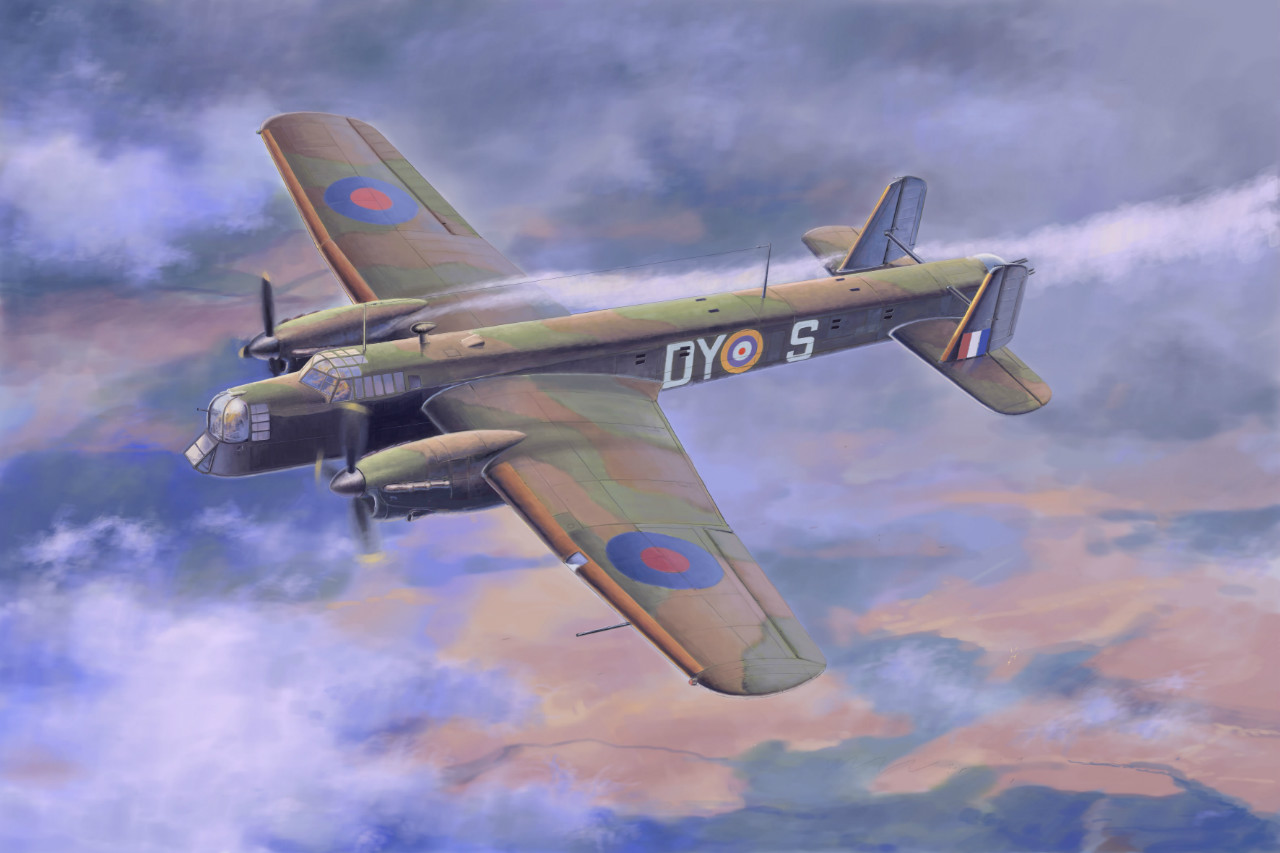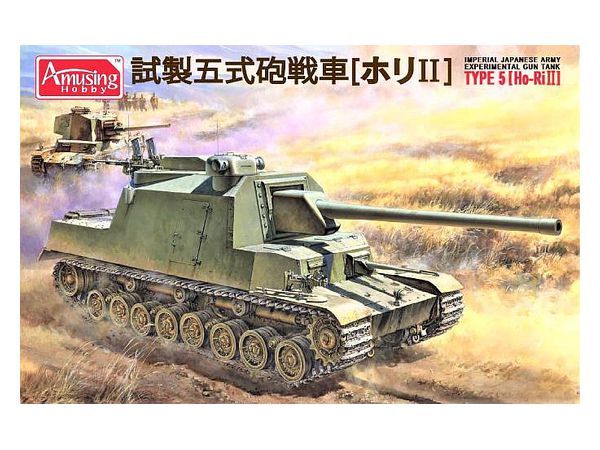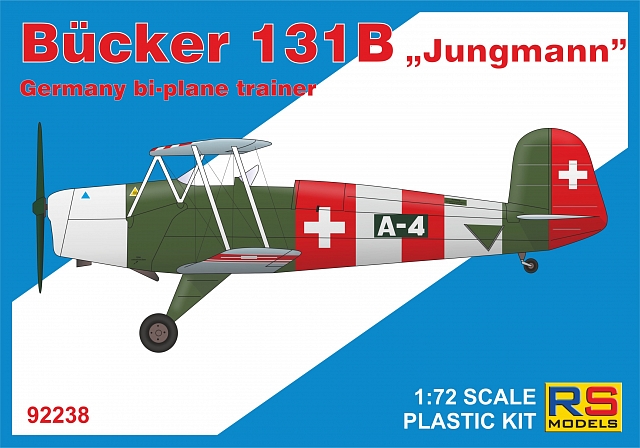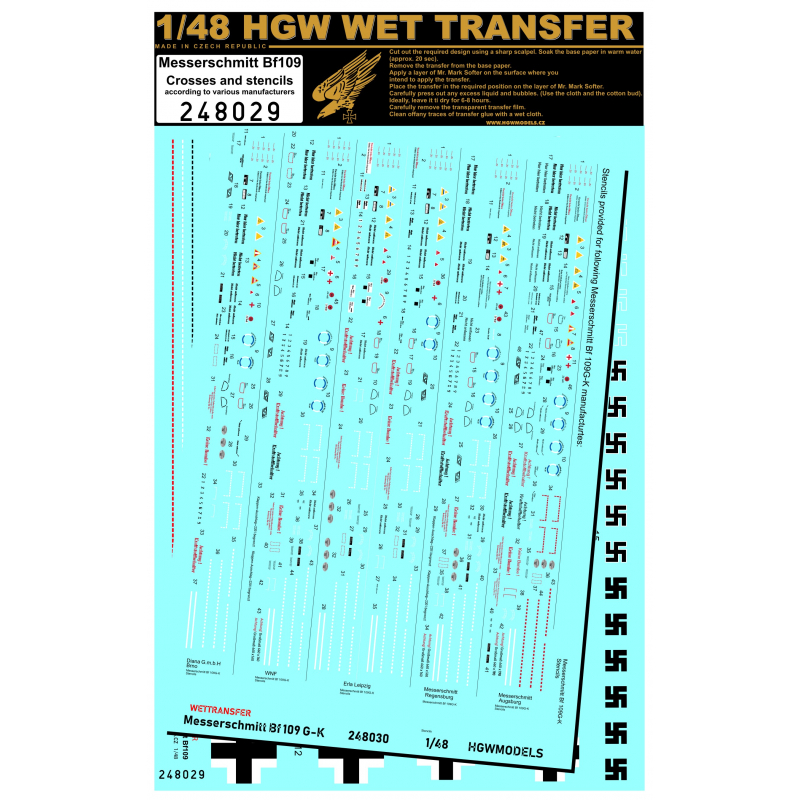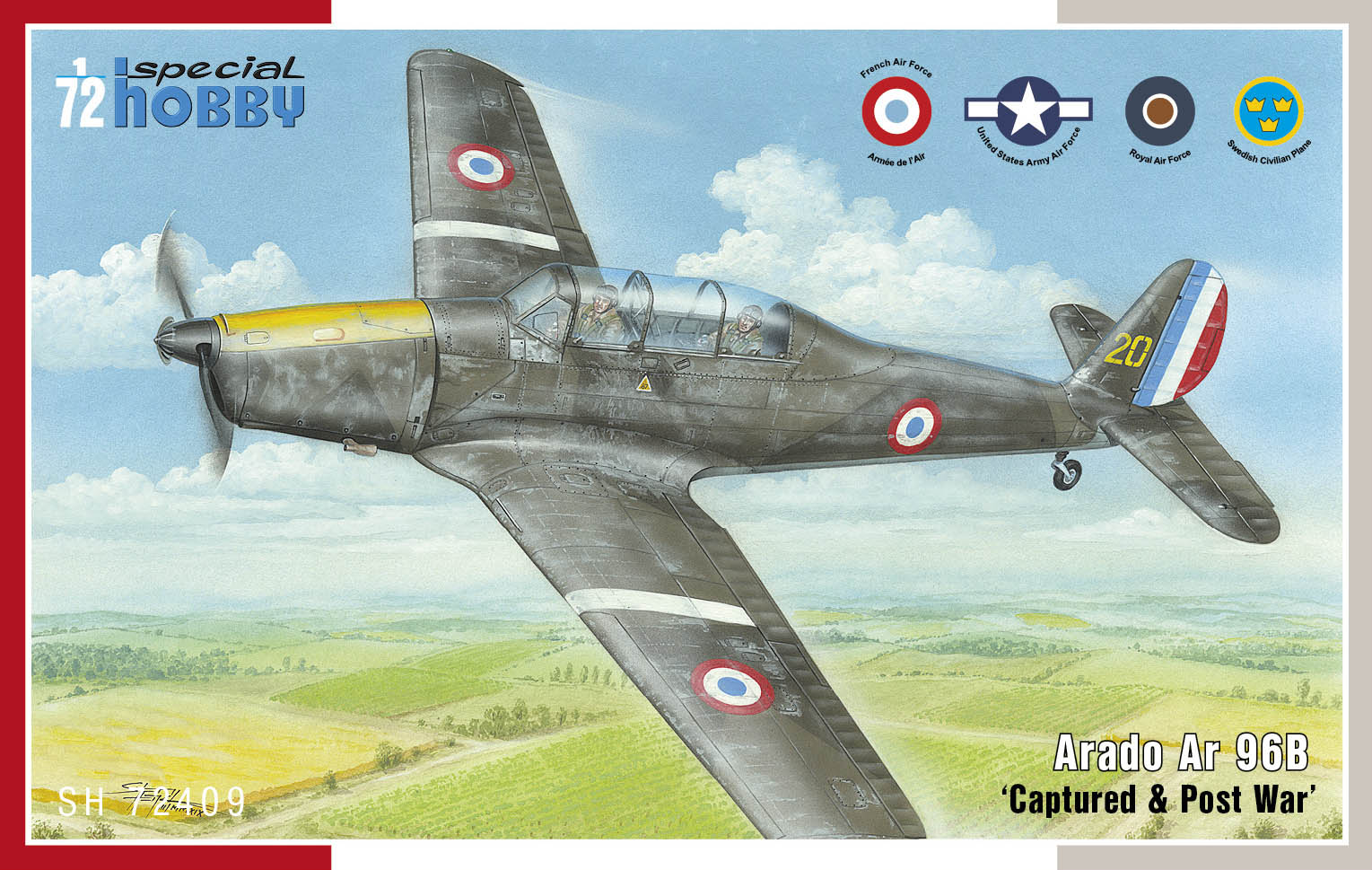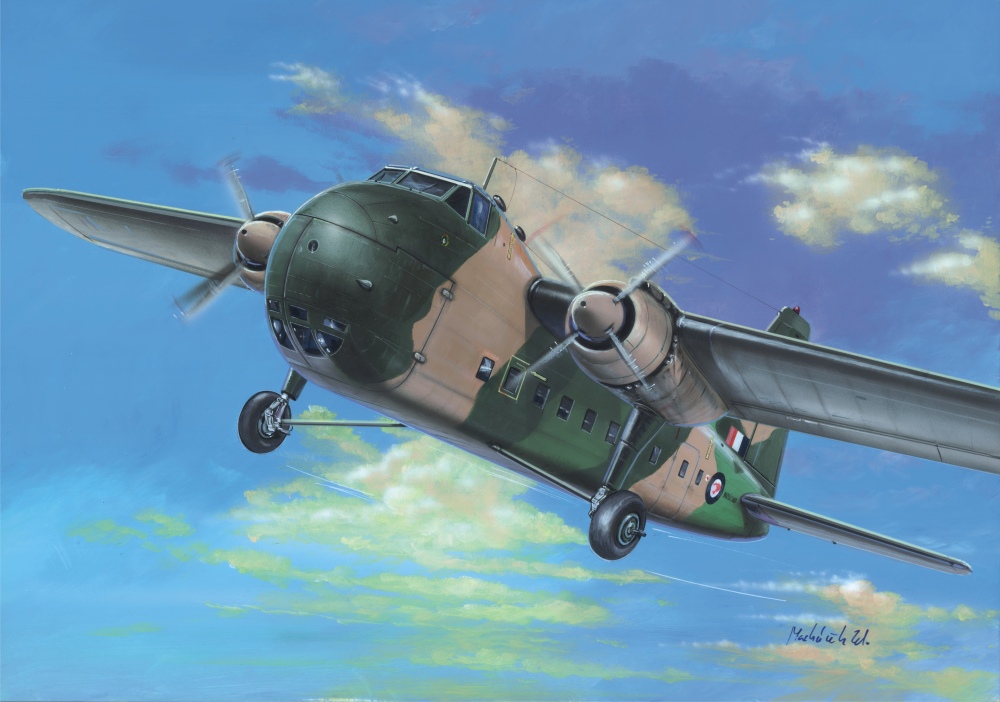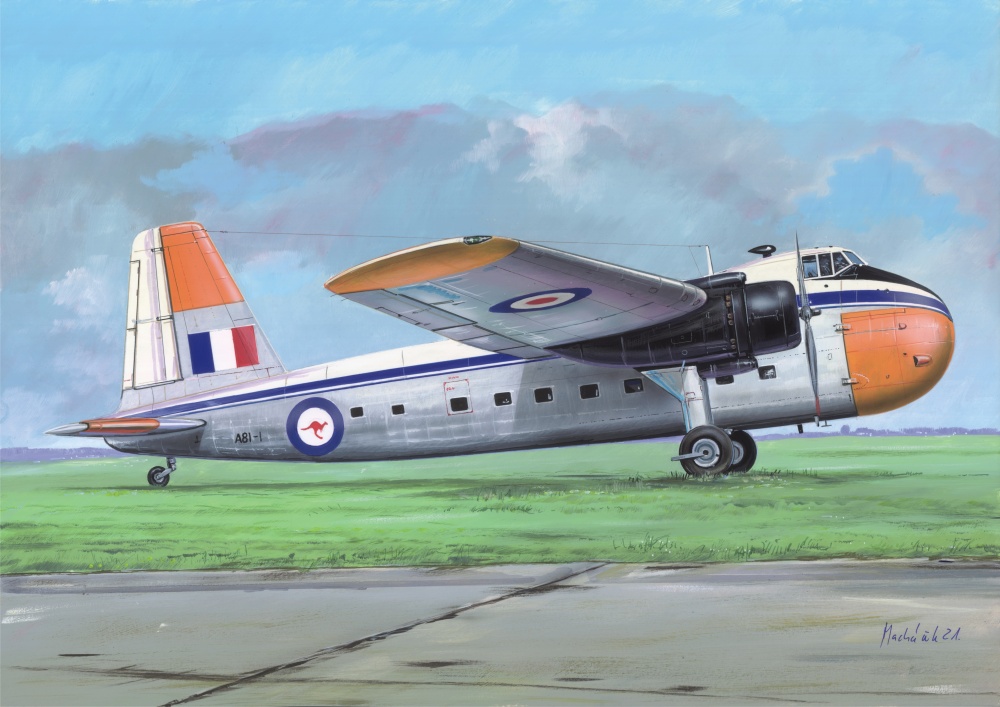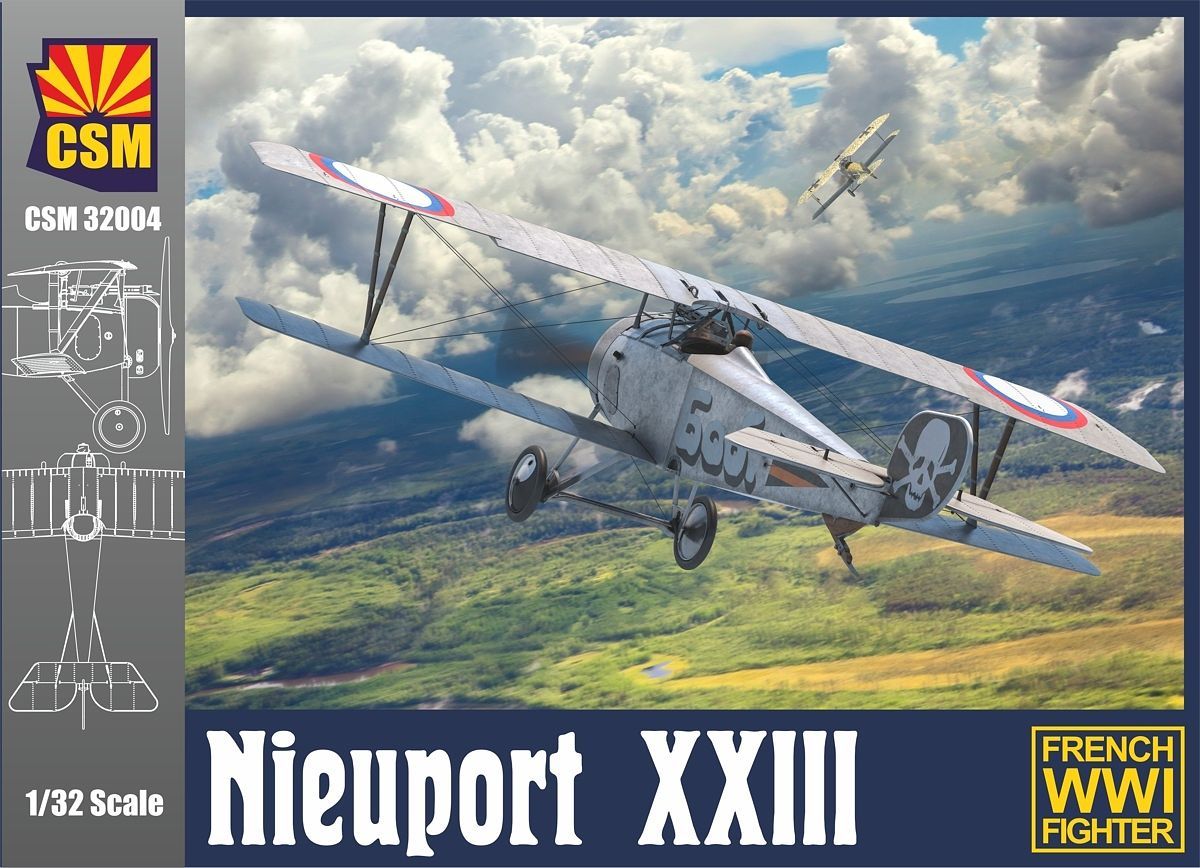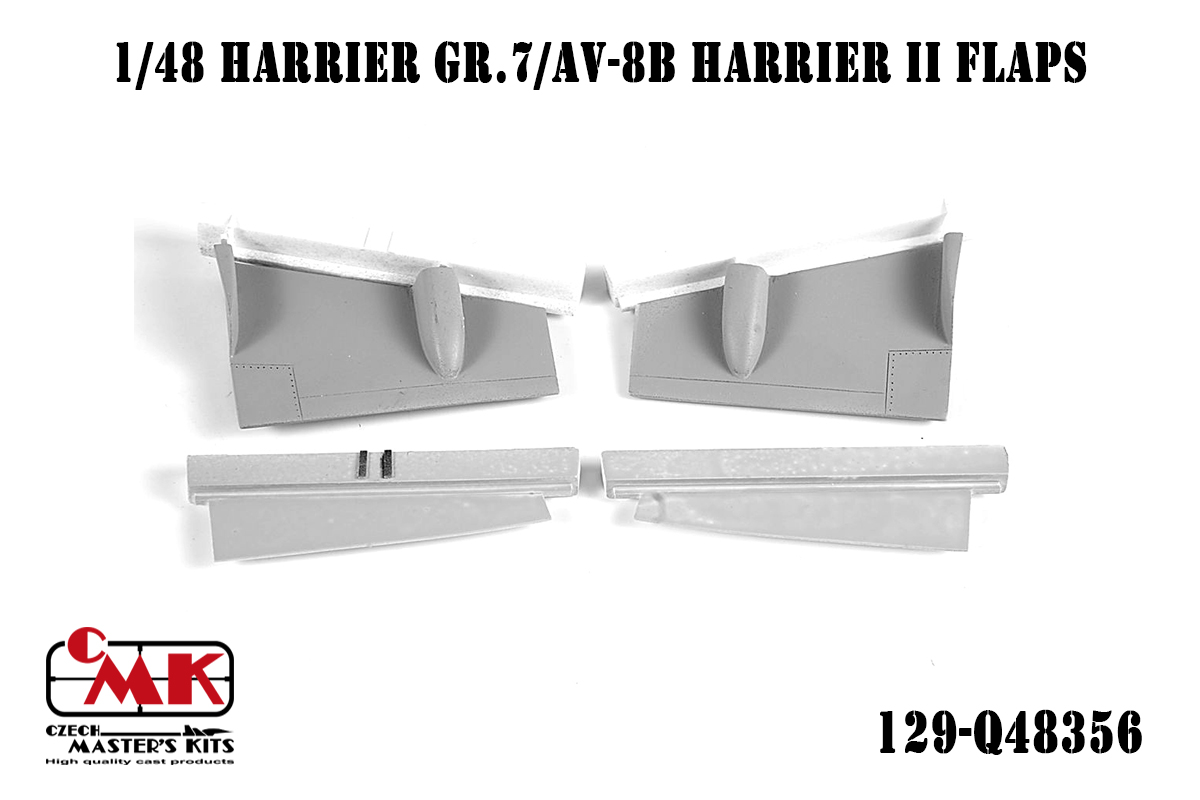Hračky
Celkem 1632 produktů
Plastikový model letadla 1/32 T-33 'Japan and South American T-Birds'. Model of one of the most famous trainer aeroplane ever built in the US, no else jet trainer has been produced in larger numbers than the T-33. With the exception of Antarctica and Australia, the T-bird was operated world-wide. The kit offers – six styrene sprues, one sprue with clear parts, full colour instruction manual, pre-painted photo etches, resin cast details and a sheet of decals. Nicely detailed model Etches and resin set already in the box Famous machine wearing unique colour schemes Decals offer a sharkmouthed machine flown in Guatemala, a Peruvian T-33 and one as operated by the JASDF. Country of origin: USA / Modern
Plastikový model letadla 1/32 T-33 'Japan and South American T-Birds'. Model of one of the most famous trainer aeroplane ever built in the US, no else jet trainer has been produced in larger numbers than the T-33. With the exception of Antarctica and Australia, the T-bird was operated world-wide. The kit offers – six styrene sprues, one sprue with clear parts, full colour instruction manual, pre-painted photo etches, resin cast details and a sheet of decals. Nicely detailed model Etches and resin set already in the box Famous machine wearing unique colour schemes Decals offer a sharkmouthed machine flown in Guatemala, a Peruvian T-33 and one as operated by the JASDF. Country of origin: USA / Modern
Plastikový model letadla 1/72 SB2A-4 Buccaneer ‘US Marines Bomber’ . The SB2A dive bomber aircraft was designed by Brewster during WW2 to be operated primarily from aircraft carriers. Although the type was produced in several various versions, it was used only for training. The British military used the type under their own name of Bermuda. A similar version was also developed for the air force of Dutch East Indies (ML-KNIL), but in the end was not delivered as the Dutch surrendered. The SB2A-3 saw service with the US Navy whilst the dash 4 variety, as brought to you in our recent release, belonged to the US Marines inventory. The decal sheet offers markings for three US Marines airframes bearing both the two- and three-colour schemes and one fictious machine as it might have looked like had it been acquired by the Dutch. US naval dive bomber the SB2A-4 was operated by the Marines decals for three US Marines options and one as would have been flown by Dutch East Indies (they in fact wanted to buy the type) the kit contains resin parts and etches
Plastikový model letadla 1/72 SB2A-4 Buccaneer ‘US Marines Bomber’ . The SB2A dive bomber aircraft was designed by Brewster during WW2 to be operated primarily from aircraft carriers. Although the type was produced in several various versions, it was used only for training. The British military used the type under their own name of Bermuda. A similar version was also developed for the air force of Dutch East Indies (ML-KNIL), but in the end was not delivered as the Dutch surrendered. The SB2A-3 saw service with the US Navy whilst the dash 4 variety, as brought to you in our recent release, belonged to the US Marines inventory. The decal sheet offers markings for three US Marines airframes bearing both the two- and three-colour schemes and one fictious machine as it might have looked like had it been acquired by the Dutch. US naval dive bomber the SB2A-4 was operated by the Marines decals for three US Marines options and one as would have been flown by Dutch East Indies (they in fact wanted to buy the type) the kit contains resin parts and etches
1/32 Fokker Dr.I Triplane "Red Baron" includes a 1/10 resin bust. More than one hundred years ago, Europe was in a state of devastation. Farms and pastures were ruined by shell craters and muddy water. Laughter in bars was replaced by people’s sobbing. Bank managers became soldiers hiding in the trenches and primary school teachers plunged bayonets into others’ chests. Everyone on the battlefield was surrounded by the angriest roars and the most vicious curses. But even in the desperate twilight, there was one gem shining brilliantly. Its brightness was so dazzling that it’s still remembered by the once warring parties. Manfred von Richthofen, the cavalry officer who learn to fly in 1915, became the top-scoring ace of World War I by winning 80 air combat victories in less than two years. His iconic red aircraft was well known to both warring parties. The Germans rejoiced in it, and the Allies were convinced by his exquisite combat skills and precious chivalry. As a legend, his death was dramatic because of the bizarre possibilities. The story of the “Red Baron” has gone across time and beyond hatred and is still being told today. The QS-002s Fokker Dr.I Triplane “Red Baron” is a limited edition product based on the MENG QS-002 Fokker Dr.I Triplane kit. This kit includes a 1/10 resin bust of the “Red Baron” Manfred von Richthofen and a Fokker Dr.I Triplane kit. This Manfred von Richthofen bust features calm and confident facial expressions. The figure wears a leather flight jacket over the Imperial German Army uniform. He wears an M1910 Officer Visor Cap on his head and a Blue Max medal on the neckline. This is the most well-known image of the “Red Baron”. This product is limited to 1,000 kits.
1/32 Fokker Dr.I Triplane "Red Baron" includes a 1/10 resin bust. More than one hundred years ago, Europe was in a state of devastation. Farms and pastures were ruined by shell craters and muddy water. Laughter in bars was replaced by people’s sobbing. Bank managers became soldiers hiding in the trenches and primary school teachers plunged bayonets into others’ chests. Everyone on the battlefield was surrounded by the angriest roars and the most vicious curses. But even in the desperate twilight, there was one gem shining brilliantly. Its brightness was so dazzling that it’s still remembered by the once warring parties. Manfred von Richthofen, the cavalry officer who learn to fly in 1915, became the top-scoring ace of World War I by winning 80 air combat victories in less than two years. His iconic red aircraft was well known to both warring parties. The Germans rejoiced in it, and the Allies were convinced by his exquisite combat skills and precious chivalry. As a legend, his death was dramatic because of the bizarre possibilities. The story of the “Red Baron” has gone across time and beyond hatred and is still being told today. The QS-002s Fokker Dr.I Triplane “Red Baron” is a limited edition product based on the MENG QS-002 Fokker Dr.I Triplane kit. This kit includes a 1/10 resin bust of the “Red Baron” Manfred von Richthofen and a Fokker Dr.I Triplane kit. This Manfred von Richthofen bust features calm and confident facial expressions. The figure wears a leather flight jacket over the Imperial German Army uniform. He wears an M1910 Officer Visor Cap on his head and a Blue Max medal on the neckline. This is the most well-known image of the “Red Baron”. This product is limited to 1,000 kits.
Plastikový model letadla 1/48 Reggiane Re 2000 I. Serie. Just before the outbreak of WW2, the Reggiane Re 2000 took part in the competition for the standard fighter which was to serve with the Italian air force. Even though the type offered quite high performance, it eventually did not win, so the most of the production was offered for export. The Regia Aeronautica, however, decided to give the type a try and deployed it mainly in the dangerous operations against Malta. The model kit contains four styrene sprues and one with clear parts. The wing sprue has its origins in the Classic Airframes kit while all the other components are brand new, the small ones being produced from metal moulds. Italian WW2 fighter aeroplane three eye-catching marking options bearing the Italian mottle camouflage pattern we also offer separate resin sets and pre-cut masks
Plastikový model letadla 1/48 Reggiane Re 2000 I. Serie. Just before the outbreak of WW2, the Reggiane Re 2000 took part in the competition for the standard fighter which was to serve with the Italian air force. Even though the type offered quite high performance, it eventually did not win, so the most of the production was offered for export. The Regia Aeronautica, however, decided to give the type a try and deployed it mainly in the dangerous operations against Malta. The model kit contains four styrene sprues and one with clear parts. The wing sprue has its origins in the Classic Airframes kit while all the other components are brand new, the small ones being produced from metal moulds. Italian WW2 fighter aeroplane three eye-catching marking options bearing the Italian mottle camouflage pattern we also offer separate resin sets and pre-cut masks
1/48 Hellcat Mk.II. The Weekend edition brings you the cheap variant of Eduard kit Hellcat Mk. II (in the Royal Navy service), 1/48 scale.User friendly decals in high quality are designed and printed by Eduard and covers camo scheme for a Mk.II JX814, 1844 Sqn FAA, Sub-Lieutenant W.M.C. Foster, HMS Indomitable, Okinawa, 12 April1945.This kit, in very fair price, contains neither photo-etch, or the painting mask.MODEL LENGTH: 215mmWINGSPAN: 275mmPLASTIC PARTS: 171MADE IN CZECH REPUBLIC
Plastikový model letadla 1/72 Dornier 17 K 4 decal v. for Yugoslavia, Hungary, Bulgaria. 4 decal variants1. Do-17 Ka-1, 209 eskadrila, Skoplje, June 19402. Do-17 Ka-2, 1. Önálló távolfeldelritö ostzály, Ferihegy3. Do-17 Ka-1, Mostarska eskadrila, Rajlovac, May 19454. Do-17 Ka, 5th Bomber Regiment, Bulgarian AF, 1941-42After seeing the Do 17 M V1 at the Zürich air races in 1937, the Yugoslavian Air Force bought licence rights for production at the DFA factory in 1938. They equipped it with the more powerful Gnome-Rhône 14N radial engines and added a Hispano 20 mm cannon and three 7.92 mm Browning machine guns. Three variants were built in Yugoslavia. The first being the Do 17Kb-1 bomber aircraft and the second was the Do 17Ka-2 reconnaissance aircraft. The final variant was the Do 17Ka-3 reconnaissance aircraft.
Plastikový model letadla 1/72 Dornier 17 K 4 decal v. for Yugoslavia, Hungary, Bulgaria. 4 decal variants1. Do-17 Ka-1, 209 eskadrila, Skoplje, June 19402. Do-17 Ka-2, 1. Önálló távolfeldelritö ostzály, Ferihegy3. Do-17 Ka-1, Mostarska eskadrila, Rajlovac, May 19454. Do-17 Ka, 5th Bomber Regiment, Bulgarian AF, 1941-42After seeing the Do 17 M V1 at the Zürich air races in 1937, the Yugoslavian Air Force bought licence rights for production at the DFA factory in 1938. They equipped it with the more powerful Gnome-Rhône 14N radial engines and added a Hispano 20 mm cannon and three 7.92 mm Browning machine guns. Three variants were built in Yugoslavia. The first being the Do 17Kb-1 bomber aircraft and the second was the Do 17Ka-2 reconnaissance aircraft. The final variant was the Do 17Ka-3 reconnaissance aircraft.
1/35 Panzerkampfwagen 38(t) Ausf.E/F. This is an injection-plastic military vehicle model kit. From Tamiya: After the effective annexation of Czechoslovakia by Nazi Germany in 1939, German forces were interested enough in the native Czech LTvz38 light tank that they took it on and ordered production under their own categorization of 38(t), a light tank with riveted, welded armor and a perky 3.7cm gun. Early production 38(t)s took part in the early German offensives of the war, and the 38(t) underwent continued development with 1,400 produced in total. Ausf.E and F 38(t)s had additional armor across the vehicle for better survivability and were deployed during the early stages of Operation Barbarossa as Nazi Germany once again invaded a neighbor, this time the Soviet Union. About the Model Length: 132mm, width: 62mm The 38(t) form with riveted armor plate is accurately depicted. Parts are included to recreate fender-top stowage boxes that were often added by units on the front line. Assembly type tracks feature single-piece straight sections for fine reproduction of upper run 'sag.' Engine grille mesh is rendered faithfully using a photo-etched component. Comes with a commander figure for installation in the hatch, and two Eastern Front marking options.
1/35 Panzerkampfwagen 38(t) Ausf.E/F. This is an injection-plastic military vehicle model kit. From Tamiya: After the effective annexation of Czechoslovakia by Nazi Germany in 1939, German forces were interested enough in the native Czech LTvz38 light tank that they took it on and ordered production under their own categorization of 38(t), a light tank with riveted, welded armor and a perky 3.7cm gun. Early production 38(t)s took part in the early German offensives of the war, and the 38(t) underwent continued development with 1,400 produced in total. Ausf.E and F 38(t)s had additional armor across the vehicle for better survivability and were deployed during the early stages of Operation Barbarossa as Nazi Germany once again invaded a neighbor, this time the Soviet Union. About the Model Length: 132mm, width: 62mm The 38(t) form with riveted armor plate is accurately depicted. Parts are included to recreate fender-top stowage boxes that were often added by units on the front line. Assembly type tracks feature single-piece straight sections for fine reproduction of upper run 'sag.' Engine grille mesh is rendered faithfully using a photo-etched component. Comes with a commander figure for installation in the hatch, and two Eastern Front marking options.
1/48 N1K2-J Shiden Kai (George) - Armament set . This nicely detailed set offers the cannon armament in either wing of the best Japanese navy fighter of WW2 produced in model form by Hasegawa. The set consists of four cannon breeches, their respective compartments in both wings, cover panels and photo etched wing structure. Country of origin: Japan / WWII
1/48 N1K2-J Shiden Kai (George) - Armament set . This nicely detailed set offers the cannon armament in either wing of the best Japanese navy fighter of WW2 produced in model form by Hasegawa. The set consists of four cannon breeches, their respective compartments in both wings, cover panels and photo etched wing structure. Country of origin: Japan / WWII
Plastikový model letadla 1/72 Avro Rota C.30A 4 decal v. for Czeczslovak.,RAF, Yugoslavia, Australia. The first production design in the series was the C.30, a radial-engined autogyro with a three-blade, 37 ft (11.3 m) rotor mounted on an aft-leaning tripod, the control column extending into the rear of the two cockpits. The engine was the five-cylinder, 105 hp (78 kW) Armstrong Siddeley Genet Major I used in the C.19 series. The fabric-covered fuselage carried an unbraced tailplane, without elevators but with turned-up tips. The port side of the tailplane had an inverted aerofoil section to counter roll-axis torque produced by the propeller. As with most autogyros, a high vertical tail was precluded by the sagging resting rotor, so the dorsal fin was long and low, extending well aft of the tailplane like a fixed rudder and augmented by a ventral fin. The wide-track undercarriage had a pair of single, wire-braced legs and a small tail wheel was fitted. This model flew in April 1933. It was followed by four improved machines designated C.30P (P here for pre-production) which differed in having a four-legged pyramid rotor mounting and a reinforced undercarriage with three struts per side. The rotor could be folded rearwards for transport. The C.30P used the more powerful (140 hp, 104 kW) seven-cylinder Armstrong Siddeley Genet Major IA radial engine.
Plastikový model letadla 1/72 Avro Rota C.30A 4 decal v. for Czeczslovak.,RAF, Yugoslavia, Australia. The first production design in the series was the C.30, a radial-engined autogyro with a three-blade, 37 ft (11.3 m) rotor mounted on an aft-leaning tripod, the control column extending into the rear of the two cockpits. The engine was the five-cylinder, 105 hp (78 kW) Armstrong Siddeley Genet Major I used in the C.19 series. The fabric-covered fuselage carried an unbraced tailplane, without elevators but with turned-up tips. The port side of the tailplane had an inverted aerofoil section to counter roll-axis torque produced by the propeller. As with most autogyros, a high vertical tail was precluded by the sagging resting rotor, so the dorsal fin was long and low, extending well aft of the tailplane like a fixed rudder and augmented by a ventral fin. The wide-track undercarriage had a pair of single, wire-braced legs and a small tail wheel was fitted. This model flew in April 1933. It was followed by four improved machines designated C.30P (P here for pre-production) which differed in having a four-legged pyramid rotor mounting and a reinforced undercarriage with three struts per side. The rotor could be folded rearwards for transport. The C.30P used the more powerful (140 hp, 104 kW) seven-cylinder Armstrong Siddeley Genet Major IA radial engine.
Plastikový model letadla 1/72 Folland Gnat FR.1 Finnish Recce Fighter. The Folland Gnat fighter aircraft was operated mainly by the military of Finland and India. Two of the Finnish airframes were delivered in the Gnat FR.1 reconnaissance variety equipped with a set of cameras in the nose section. They were coded GN-112 and GN-113 and flew recon and mapping sorties. They, however, retained their cannon armament and ability to fly in the fighter role, too. The model comes on three grey styrene sprues and two made of clear plastic. The decal sheet covers both Finnish recon machines. unusual and interesting variety of the Gnat the decals offer a full set of stencils wide variety of wing armament masks and detail sets also available: M72004, CMK 7332,7333, Q72236, Q72237
Plastikový model letadla 1/72 Folland Gnat FR.1 Finnish Recce Fighter. The Folland Gnat fighter aircraft was operated mainly by the military of Finland and India. Two of the Finnish airframes were delivered in the Gnat FR.1 reconnaissance variety equipped with a set of cameras in the nose section. They were coded GN-112 and GN-113 and flew recon and mapping sorties. They, however, retained their cannon armament and ability to fly in the fighter role, too. The model comes on three grey styrene sprues and two made of clear plastic. The decal sheet covers both Finnish recon machines. unusual and interesting variety of the Gnat the decals offer a full set of stencils wide variety of wing armament masks and detail sets also available: M72004, CMK 7332,7333, Q72236, Q72237
Plastikový model letadla 1/72 Caudron CR.714 C-1 4 decal v. for France, Luftwaffe, Finland. 4 decal variants1. Caudron CR-714, 2nd Esc. GC 1/145, Dreux, A. Niewiara, June 19402. Caudron CR-714, 1st Esc. GC 1/145, Villacoublay, L. Uher, May 19403. Caudron CR-714, Finland, May 19414. Caudron CR-714, test aicraft, Luftwaffe 1940The first prototype was test flown in July 1938 and the first production machine, powered by a Renault 12R-03, was delivered in July 1939. The armament consisted of four 7,5mm MAC 1934 machine guns located in two wing gondolas. Only GC 1-145 was equipped with the Caudron C.714. It was a unit composed of Polish pilots under French command. They fought against the Luftwaffe in spring 1940 and despite the aircraft climbing, the highly battle motivated Polish pilots scored 8 confirmed victories with an overall loss of 7 pilots. Until the fall of France, more than 60 machines were produced and several were in progress. At least one machine was tested by the Luftwaffe.
Plastikový model letadla 1/72 Caudron CR.714 C-1 4 decal v. for France, Luftwaffe, Finland. 4 decal variants1. Caudron CR-714, 2nd Esc. GC 1/145, Dreux, A. Niewiara, June 19402. Caudron CR-714, 1st Esc. GC 1/145, Villacoublay, L. Uher, May 19403. Caudron CR-714, Finland, May 19414. Caudron CR-714, test aicraft, Luftwaffe 1940The first prototype was test flown in July 1938 and the first production machine, powered by a Renault 12R-03, was delivered in July 1939. The armament consisted of four 7,5mm MAC 1934 machine guns located in two wing gondolas. Only GC 1-145 was equipped with the Caudron C.714. It was a unit composed of Polish pilots under French command. They fought against the Luftwaffe in spring 1940 and despite the aircraft climbing, the highly battle motivated Polish pilots scored 8 confirmed victories with an overall loss of 7 pilots. Until the fall of France, more than 60 machines were produced and several were in progress. At least one machine was tested by the Luftwaffe.
1/35 2CM SALVENMASCHINENKANONE SMK 18 TYPE 2. This is an injection-plastic field gun model kit. The SMK18 Type 2 2-cm cannon is a high-fidelity gun made by Germany during World War II. The idea was to shoot down enemy aircraft by simultaneously firing eight 2-cm cannons. The Type 1 had the cannons in a horizontal arrangement; the prototype of the Type 2 was built in 1939, but it proved to be too unstable for use, as there was too much of a load on its moving parts. This gun is currently on display in a museum in Moscow, Russia. This kit features highly detailed breech and carriage assemblies, working elevation and sight mechanisms, and a choice of optical or iron sights. The stabilizer arms are movable, and a set of photo-etched parts is included as well. Order yours today! [Includes]: Photo-etched parts
1/35 2CM SALVENMASCHINENKANONE SMK 18 TYPE 2. This is an injection-plastic field gun model kit. The SMK18 Type 2 2-cm cannon is a high-fidelity gun made by Germany during World War II. The idea was to shoot down enemy aircraft by simultaneously firing eight 2-cm cannons. The Type 1 had the cannons in a horizontal arrangement; the prototype of the Type 2 was built in 1939, but it proved to be too unstable for use, as there was too much of a load on its moving parts. This gun is currently on display in a museum in Moscow, Russia. This kit features highly detailed breech and carriage assemblies, working elevation and sight mechanisms, and a choice of optical or iron sights. The stabilizer arms are movable, and a set of photo-etched parts is included as well. Order yours today! [Includes]: Photo-etched parts
1/35 US Army Jeep + trailer & MP figure. Powered by a 60hp engine, the U.S. Army 1/4-ton trucks were wildly popular off-road capable light utility vehicles, built in large numbers to a standardized design from 1941 to 1945, for the Allied forces in World War II. With an operational range of 300 miles, the 1/4-ton truck became the primary light wheeled transport vehicle of the United States military and its allies in World War II, as well as the postwar period. About 650,000 units were built, constituting a quarter of the total U.S. non-combat motor vehicles produced during the war, with large numbers being provided to U.S. allies. Release Date:Aug 2019 Item Size/Weight:30.3cm x 20.0cm x 5.0cm / 250g
1/35 US Army Jeep + trailer & MP figure. Powered by a 60hp engine, the U.S. Army 1/4-ton trucks were wildly popular off-road capable light utility vehicles, built in large numbers to a standardized design from 1941 to 1945, for the Allied forces in World War II. With an operational range of 300 miles, the 1/4-ton truck became the primary light wheeled transport vehicle of the United States military and its allies in World War II, as well as the postwar period. About 650,000 units were built, constituting a quarter of the total U.S. non-combat motor vehicles produced during the war, with large numbers being provided to U.S. allies. Release Date:Aug 2019 Item Size/Weight:30.3cm x 20.0cm x 5.0cm / 250g
1/72 Chieftain Mk.10 + Mk.11 Combo. This is an injection-plastic military vehicle model kit.The Chieftain is a second-generation main battle tank developed in the United Kingdom after World War II. Development began in the 1950s with the goal of integrating the main tank, the Centurion, and is supporting heavy tank, the Conqueror. Mass production began in May 1963. Because the British Army was skeptical of the idea of improving mobility at the expense of armor defense, the Chieftain adopted heavy armor for occupant protection and the new L11 120mm tank gun as its main armament. The main gun was powerful enough to destroy Soviet-made tanks such as the T-55 and T-62 at a distance of up to 4,000 meters.This new kit from Takom features photo-etched parts and decals for 6 versions; link-and-length tracks and assembly jig are also included. Order yours today![Includes]: Photo-etched parts, decals for 6 versions
1/72 Chieftain Mk.10 + Mk.11 Combo. This is an injection-plastic military vehicle model kit.The Chieftain is a second-generation main battle tank developed in the United Kingdom after World War II. Development began in the 1950s with the goal of integrating the main tank, the Centurion, and is supporting heavy tank, the Conqueror. Mass production began in May 1963. Because the British Army was skeptical of the idea of improving mobility at the expense of armor defense, the Chieftain adopted heavy armor for occupant protection and the new L11 120mm tank gun as its main armament. The main gun was powerful enough to destroy Soviet-made tanks such as the T-55 and T-62 at a distance of up to 4,000 meters.This new kit from Takom features photo-etched parts and decals for 6 versions; link-and-length tracks and assembly jig are also included. Order yours today![Includes]: Photo-etched parts, decals for 6 versions
1/35 Sd.Kfz.184 Ferdinand & 16t Strabokran. DESCRIPTION This is an injection-plastic military vehicle model kit. From Amusing Hobby comes a 2-in-1 kit of the Ferdinand Jagdpanzer Sd.Kfz. 184 and 16t Strabokran! The characteristic feature of the Ferdinand was that it was generated by two gasoline engines and driven by an electric motor. By using a motor as the driving unit, no transmission was required. In the past, this vehicle was said to have a lot of breakdowns for this reason, but some recent documents have reported that there were fewer breakdowns than some vehicles equipped with transmissions. On the Eastern Front, the Ferdinand's appearance had a great impact. Strabokrans are gate-type mobile cranes used by German field maintenance teams during tank maintenance and repairs. About 100 units were manufactured and used in German armored divisions and heavy tank battalions. Kit features: The Ferdinand's interior layout can be enjoyed even after completion thanks to the included transparent parts. The kit recreates the precise details of the Strabokran, and it can assembled in its working state. [Mold Color]: Tan, brown [Includes]: Clear parts, photo-etched parts Release Date:Sep 2019 Item Size/Weight:39.8cm x 26.3cm x 19.5cm / 1680g
1/35 Sd.Kfz.184 Ferdinand & 16t Strabokran. DESCRIPTION This is an injection-plastic military vehicle model kit. From Amusing Hobby comes a 2-in-1 kit of the Ferdinand Jagdpanzer Sd.Kfz. 184 and 16t Strabokran! The characteristic feature of the Ferdinand was that it was generated by two gasoline engines and driven by an electric motor. By using a motor as the driving unit, no transmission was required. In the past, this vehicle was said to have a lot of breakdowns for this reason, but some recent documents have reported that there were fewer breakdowns than some vehicles equipped with transmissions. On the Eastern Front, the Ferdinand's appearance had a great impact. Strabokrans are gate-type mobile cranes used by German field maintenance teams during tank maintenance and repairs. About 100 units were manufactured and used in German armored divisions and heavy tank battalions. Kit features: The Ferdinand's interior layout can be enjoyed even after completion thanks to the included transparent parts. The kit recreates the precise details of the Strabokran, and it can assembled in its working state. [Mold Color]: Tan, brown [Includes]: Clear parts, photo-etched parts Release Date:Sep 2019 Item Size/Weight:39.8cm x 26.3cm x 19.5cm / 1680g
1/48 Ox Towing Me 163B with a Luftwaffe Ground Crew. At the final stages of WW2, the Third Reich faced serious shortage of fuel and to save the maximum amount possible, draft animals were used for taxiing aircraft on airfields, too. Even the most advanced jet and rocket-powered military aircraft such as the Me 262 or Me 163 were often seen in 1945 being towed like a mere middle ages style ox cart. This set contains a figure of a Luftwaffe groundcrew with a draft animal ready to tow a Me 163 Komet on the airfield (the figures have been sculpted based on a period photo. However, a photo of a Bf 109G being towed by such poor animal exists too). The draft animal offered in our set can be used in any other type of diorama as well. Country: Germany / WWII
Plastikový model letadla 1/72 SMB-2 Super Mystere Duo Pack & Book. The SMB.2 is a French jet fighter aeroplane of the 1960s which saw service not just with the French Air Force, but in Israel and Honduras too and made its name mainly in combat missions flown by Israeli pilots over the Middle East. The box contains two complete kits of the Super Mystere / Sa’ar jet and a really superb photographic book on the type from Ra’anan Weiss of Isradecal. two nicely detailed and very accurate model kits in one box, each of which offers both engine tail pipe versions.decal sheets printed to maximum quality by Italian Cartograf bring two French, three Israeli and one Honduran marking options.the kit also offers a superb photographic take on the type with plethora of preciusly unpublished photos charting its service with the IAFresin cast hot seat for the Honduran option. France / Israel / Honduras / post WWII
Plastikový model letadla 1/72 SMB-2 Super Mystere Duo Pack & Book. The SMB.2 is a French jet fighter aeroplane of the 1960s which saw service not just with the French Air Force, but in Israel and Honduras too and made its name mainly in combat missions flown by Israeli pilots over the Middle East. The box contains two complete kits of the Super Mystere / Sa’ar jet and a really superb photographic book on the type from Ra’anan Weiss of Isradecal. two nicely detailed and very accurate model kits in one box, each of which offers both engine tail pipe versions.decal sheets printed to maximum quality by Italian Cartograf bring two French, three Israeli and one Honduran marking options.the kit also offers a superb photographic take on the type with plethora of preciusly unpublished photos charting its service with the IAFresin cast hot seat for the Honduran option. France / Israel / Honduras / post WWII
1/35 Panzer IV Ausf. H early. Rye Field Model brings us the definitive model kit of the IV Tank H Type! This was the final development of the IV tank. Production began in April 1943, and by July 1944, 3,774 vehicles were produced -- the highest number in the IV series.The crawler tracks are assembled and movable; the Maybach HL120TRM engine is precisely reproduced around the breech. The suspension is movable too, and the starter wheels, guide wheels, and rolling wheels can all rotate after assembly thanks to polycaps. Photo-etched parts are included for Schulzen and additional anti-aircraft armor, as are decals for three versions. [Includes]: Photo-etched parts, decals for 3 versions
1/35 Panzer IV Ausf. H early. Rye Field Model brings us the definitive model kit of the IV Tank H Type! This was the final development of the IV tank. Production began in April 1943, and by July 1944, 3,774 vehicles were produced -- the highest number in the IV series.The crawler tracks are assembled and movable; the Maybach HL120TRM engine is precisely reproduced around the breech. The suspension is movable too, and the starter wheels, guide wheels, and rolling wheels can all rotate after assembly thanks to polycaps. Photo-etched parts are included for Schulzen and additional anti-aircraft armor, as are decals for three versions. [Includes]: Photo-etched parts, decals for 3 versions
Plastikový model letadla 1/72 Boston MK.III Intruder. Model of the US WW2 two-engined aircraft in a version used by the British in the night fighter and intruder roles. The kit consists of seven styrene sprues which feature also the underbelly machine gun pod for the Intruder machines and the Havoc Mk.II night fighter style nose section, one clear styrene sprue, decal sheet, resin parts and photo etches. this version has never been kitted before decals cater for four marking schemes, two Intruders and two Havoc Mk.III‘s photo etched antenna array parts finely detailed Hedgehog style exhausts Country of origin: UK / WWII
Plastikový model letadla 1/72 Boston MK.III Intruder. Model of the US WW2 two-engined aircraft in a version used by the British in the night fighter and intruder roles. The kit consists of seven styrene sprues which feature also the underbelly machine gun pod for the Intruder machines and the Havoc Mk.II night fighter style nose section, one clear styrene sprue, decal sheet, resin parts and photo etches. this version has never been kitted before decals cater for four marking schemes, two Intruders and two Havoc Mk.III‘s photo etched antenna array parts finely detailed Hedgehog style exhausts Country of origin: UK / WWII
1/72 Armstrong Whitworth Whitley Mk V. Colour schemes:Amstrong Whitworth Whitley Mk. V N1428, GE:B of the 58.Squadron Linton-on-Ouse in June 1940. After operation service until struck off charge in April 1945Armstrong Whitworth Whitley Mk. V P5004, KN:U of the 77.Squadron seen at Cranwell late 1940Armstrong Whitworth Whitley Mk. V T4131, EY:W of the 78.Squadron 1941Armstrong Whitworth Whitley Mk. V T4261, DY:U of the No. 102.Squadron late 194
1/72 Armstrong Whitworth Whitley Mk V. Colour schemes:Amstrong Whitworth Whitley Mk. V N1428, GE:B of the 58.Squadron Linton-on-Ouse in June 1940. After operation service until struck off charge in April 1945Armstrong Whitworth Whitley Mk. V P5004, KN:U of the 77.Squadron seen at Cranwell late 1940Armstrong Whitworth Whitley Mk. V T4131, EY:W of the 78.Squadron 1941Armstrong Whitworth Whitley Mk. V T4261, DY:U of the No. 102.Squadron late 194
1/35 EXPERIMENTAL GUN TANK TYPE 5 (HO-RI II). This is an injection-plastic military vehicle model kit. The Experimental Gun Tank Type 5 (Ho-Ri II) was designed but never prototyped. Like the Ho-Ri I, it uses the body of the Type 5 Medium Tank Chi-Ri, and an aircraft gasoline engine (water-cooloed V-type 12-cylinder) was used rather than the traditional diesel engine. The Ho-Ri II also differs from the Ho-Ri 1 in its center-located battle chamber, and its vertical armor. In addition to its other armaments, it carries a pair of 20mm high-firing anti-aircraft cannon at the rear, with a ranging gun on the cupola. Order this tank for your own collection today!
1/35 EXPERIMENTAL GUN TANK TYPE 5 (HO-RI II). This is an injection-plastic military vehicle model kit. The Experimental Gun Tank Type 5 (Ho-Ri II) was designed but never prototyped. Like the Ho-Ri I, it uses the body of the Type 5 Medium Tank Chi-Ri, and an aircraft gasoline engine (water-cooloed V-type 12-cylinder) was used rather than the traditional diesel engine. The Ho-Ri II also differs from the Ho-Ri 1 in its center-located battle chamber, and its vertical armor. In addition to its other armaments, it carries a pair of 20mm high-firing anti-aircraft cannon at the rear, with a ranging gun on the cupola. Order this tank for your own collection today!
Plastikový model letadla 1/72 Bücker Bü-131 B 5 decal v. for Switz, Bulgaria, Luftw., Spain, Finland. 5 decal variants1. Bücker 131B, Swiss AF, Lst, FL.Kp.55, Januar 19452. Bücker 131B, Spain AF, Tablada 19373. Bücker 131B, D-EBZE, Berlin Rangdorf 19374. Bücker 131B, Bulgarian AF, Airfield Sofia-Bozuriste 19405. Bücker 131B, Finnish Aeroclub, 1940The Bücker 131 was a biplane for aerobatic and training use. Was designed by Anders J. Anderson and first flew on April 1934. Production of the Bü 131A powered by an 80hp Hirth HM 60R began in the same year. First aircraft were delivered to the Luftwaffe in 1935 year. During 1936, was produced Bü 131B with powerful 105hp Hirth HM 504A-2 engine. Most produced was the version D. The aircraft was used by Luftwaffe as training, also by night ground-attack. Was also exported in many countries - Japan, Switzerland, Spain, Yugoslavia, Romania and Bulgaria. Under licence was built in Japan and after WWII also in Spain-CASA and Czechoslovakia as C-104 trainer with Walter Minor 4-III.
Plastikový model letadla 1/72 Bücker Bü-131 B 5 decal v. for Switz, Bulgaria, Luftw., Spain, Finland. 5 decal variants1. Bücker 131B, Swiss AF, Lst, FL.Kp.55, Januar 19452. Bücker 131B, Spain AF, Tablada 19373. Bücker 131B, D-EBZE, Berlin Rangdorf 19374. Bücker 131B, Bulgarian AF, Airfield Sofia-Bozuriste 19405. Bücker 131B, Finnish Aeroclub, 1940The Bücker 131 was a biplane for aerobatic and training use. Was designed by Anders J. Anderson and first flew on April 1934. Production of the Bü 131A powered by an 80hp Hirth HM 60R began in the same year. First aircraft were delivered to the Luftwaffe in 1935 year. During 1936, was produced Bü 131B with powerful 105hp Hirth HM 504A-2 engine. Most produced was the version D. The aircraft was used by Luftwaffe as training, also by night ground-attack. Was also exported in many countries - Japan, Switzerland, Spain, Yugoslavia, Romania and Bulgaria. Under licence was built in Japan and after WWII also in Spain-CASA and Czechoslovakia as C-104 trainer with Walter Minor 4-III.
1/48 Messerschmitt Bf109 Crosses + Stencils - Wet Transfers - various manufacturers. Crosses and stencils for Messerschmitt Bf109 in 1/48 scale. Wet transfer technology means that decal doesn't leave any signs of varnish or typical film after its application, so only text or symbols stay attached to the surface. The biggest issue relating to using ordinary decals is the varnish which creates a glossy film around the decal. It is quite hard to work with classic decals the way to make this film invisible and it is impossible to reach a good result in case of metallic surfaces. OK, there are dry transfers on the market but work with them is also quite uncomfortable, it is hard to place them correctly and a modeler has the one chance only. HGW's wet transfers are similar to ordinary decals. It is possible to move them during the attaching process and find the best position. Then just push the water from below the transfer, let it dry few hours, remove the transfer foil and work is done. Only text or symbol stays attached to the surface. Instructions: 1. Cut the required part.2. Soak in hot water and wait till the decal loose its base-paper.3. Apply as regular decal.4. Push the water from below the decal.5. Let it dry for 2-3 hours.6. Remove the transfer foil and clean the glue stains with water.
1/48 Messerschmitt Bf109 Crosses + Stencils - Wet Transfers - various manufacturers. Crosses and stencils for Messerschmitt Bf109 in 1/48 scale. Wet transfer technology means that decal doesn't leave any signs of varnish or typical film after its application, so only text or symbols stay attached to the surface. The biggest issue relating to using ordinary decals is the varnish which creates a glossy film around the decal. It is quite hard to work with classic decals the way to make this film invisible and it is impossible to reach a good result in case of metallic surfaces. OK, there are dry transfers on the market but work with them is also quite uncomfortable, it is hard to place them correctly and a modeler has the one chance only. HGW's wet transfers are similar to ordinary decals. It is possible to move them during the attaching process and find the best position. Then just push the water from below the transfer, let it dry few hours, remove the transfer foil and work is done. Only text or symbol stays attached to the surface. Instructions: 1. Cut the required part.2. Soak in hot water and wait till the decal loose its base-paper.3. Apply as regular decal.4. Push the water from below the decal.5. Let it dry for 2-3 hours.6. Remove the transfer foil and clean the glue stains with water.
Plastikový model letadla 1/72 Arado Ar 96B 'Captured&Post War'. Model of a German WW2 trainer plane wearing colours of its Allied users and as flown in immediately post-war era. The kit consists of two sprues joined by a clear sprue, decal sheet, resin details and a pe fret. decals enable the modeller to finish the model in either British, US, French or Swedish post war (civil) scheme photoetches and resin parts come with the kit Country of origin: Germany / WWII
Plastikový model letadla 1/72 Arado Ar 96B 'Captured&Post War'. Model of a German WW2 trainer plane wearing colours of its Allied users and as flown in immediately post-war era. The kit consists of two sprues joined by a clear sprue, decal sheet, resin details and a pe fret. decals enable the modeller to finish the model in either British, US, French or Swedish post war (civil) scheme photoetches and resin parts come with the kit Country of origin: Germany / WWII
1/72 Bristol 170 Mk.31. The Bristol Type 170 Freighter was a British twin-engine aircraft designed and built by the Bristol Aeroplane Company as both a freighter and airliner. Its best known use was as an air ferry to carry cars and their passengers over relatively short distances. A passenger-only version was also produced, known as the Wayfarer. The Freighter was developed during the Second World War, having attracted official attention from the British Air Ministry, which sought the development of a rugged vehicle capable of carrying various cargoes, including a 3-ton truck. Various changes to the design were made to accommodate their requirements, but being completed too late to participate in the conflict, the majority of sales of the Freighter were to commercial operators. In response to customer demand, an enlarged version to maximise vehicle-carrying capacity, known as the Bristol Superfreighter, was developed.
1/72 Bristol 170 Mk.21. The Bristol Type 170 Freighter was a British twin-engine aircraft designed and built by the Bristol Aeroplane Company as both a freighter and airliner. Its best known use was as an air ferry to carry cars and their passengers over relatively short distances. A passenger-only version was also produced, known as the Wayfarer. The Freighter was developed during the Second World War, having attracted official attention from the British Air Ministry, which sought the development of a rugged vehicle capable of carrying various cargoes, including a 3-ton truck. Various changes to the design were made to accommodate their requirements, but being completed too late to participate in the conflict, the majority of sales of the Freighter were to commercial operators. In response to customer demand, an enlarged version to maximise vehicle-carrying capacity, known as the Bristol Superfreighter, was developed.
1/72 Bristol 170 Mk.31. The Bristol Type 170 Freighter was a British twin-engine aircraft designed and built by the Bristol Aeroplane Company as both a freighter and airliner. Its best known use was as an air ferry to carry cars and their passengers over relatively short distances. A passenger-only version was also produced, known as the Wayfarer. The Freighter was developed during the Second World War, having attracted official attention from the British Air Ministry, which sought the development of a rugged vehicle capable of carrying various cargoes, including a 3-ton truck. Various changes to the design were made to accommodate their requirements, but being completed too late to participate in the conflict, the majority of sales of the Freighter were to commercial operators. In response to customer demand, an enlarged version to maximise vehicle-carrying capacity, known as the Bristol Superfreighter, was developed.
1/72 Bristol 170 Mk.21. The Bristol Type 170 Freighter was a British twin-engine aircraft designed and built by the Bristol Aeroplane Company as both a freighter and airliner. Its best known use was as an air ferry to carry cars and their passengers over relatively short distances. A passenger-only version was also produced, known as the Wayfarer. The Freighter was developed during the Second World War, having attracted official attention from the British Air Ministry, which sought the development of a rugged vehicle capable of carrying various cargoes, including a 3-ton truck. Various changes to the design were made to accommodate their requirements, but being completed too late to participate in the conflict, the majority of sales of the Freighter were to commercial operators. In response to customer demand, an enlarged version to maximise vehicle-carrying capacity, known as the Bristol Superfreighter, was developed.
1/32 Nieuport XXIII Belgium, Russia. Was largely the same as the definitive XVII, differing mainly in the use of a different machine gun synchronizer. Nieuport XXIIIs were operated by both French and British squadrons alongside Nieuport XVIIs until their replacement by Nieuport 24s. CSM 1/32 plastic injection kit -5 plastic frets -Instruction in colour -Film for windscreen -PhotoEtch -Decals for 4 markings printed by Cartograf
1/32 Nieuport XXIII Belgium, Russia. Was largely the same as the definitive XVII, differing mainly in the use of a different machine gun synchronizer. Nieuport XXIIIs were operated by both French and British squadrons alongside Nieuport XVIIs until their replacement by Nieuport 24s. CSM 1/32 plastic injection kit -5 plastic frets -Instruction in colour -Film for windscreen -PhotoEtch -Decals for 4 markings printed by Cartograf
1/48 N1K2-J Shiden Kai (George) - Cockpit set . Finely detailed interior set tailored to fit the new Hasegawa’s rendition (with recessed panel lines) of the George, arguably the very best fighter plane of the Japanese Navy in WW2. The set contains also a pre-painted fret with the instrument panel and seat belts. Country of origin: Japan / WWII
1/48 N1K2-J Shiden Kai (George) - Cockpit set . Finely detailed interior set tailored to fit the new Hasegawa’s rendition (with recessed panel lines) of the George, arguably the very best fighter plane of the Japanese Navy in WW2. The set contains also a pre-painted fret with the instrument panel and seat belts. Country of origin: Japan / WWII
1/48 Harrier GR.7/AV-8B Harrier II Flaps. These wing flaps have been tailored to fit the Hasegawa kits of the British Harrier GR.7 and the US AV-8B Harrier II vertical take off and landing (VTOL) jets. The flaps can be attached in the down position, very often seen while the machine standing on the ground (or board). Country of origin: UK / Modern
1/48 Harrier GR.7/AV-8B Harrier II Flaps. These wing flaps have been tailored to fit the Hasegawa kits of the British Harrier GR.7 and the US AV-8B Harrier II vertical take off and landing (VTOL) jets. The flaps can be attached in the down position, very often seen while the machine standing on the ground (or board). Country of origin: UK / Modern


